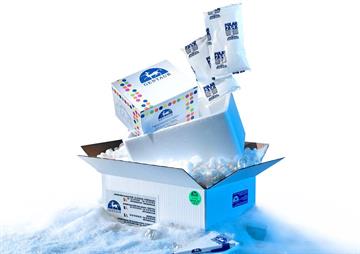JNK2 Polyclonal Antibody

JNK2 Polyclonal Antibody
181 EUR
In Stock
quantity
Produktdetaljer
Katalognummer: 866 - RD70112A-60uL
Produktkategori: Företag och industri > Vetenskap och laboratorium
Reddot BiotechGentaur
Storlek: 60μL
Parameters
| Additional information | IHC |
|---|---|
| Storage and shipping | Store at -20℃. Avoid freeze / thaw cycles. |
Related Products
ABP51665-003ml
JNK2 Polyclonal Antibody
A polyclonal antibody for detection of JNK2 from Human, Mouse, Rat. This JNK2 antibody is for WB, IHC-P, ELISA. It is affinity-purified from rabbit antiserum by affinity-chromatography using epitope-specific immunogenand is unconjugated. The antibody is produced in rabbit by using as an immunogen synthesized peptide derived from the Internal region of human JNK2 at AA range: 220-300
464.4 €
ABP51665-01ml
JNK2 Polyclonal Antibody
A polyclonal antibody for detection of JNK2 from Human, Mouse, Rat. This JNK2 antibody is for WB, IHC-P, ELISA. It is affinity-purified from rabbit antiserum by affinity-chromatography using epitope-specific immunogenand is unconjugated. The antibody is produced in rabbit by using as an immunogen synthesized peptide derived from the Internal region of human JNK2 at AA range: 220-300
700.2 €
ABP51665-02ml
JNK2 Polyclonal Antibody
A polyclonal antibody for detection of JNK2 from Human, Mouse, Rat. This JNK2 antibody is for WB, IHC-P, ELISA. It is affinity-purified from rabbit antiserum by affinity-chromatography using epitope-specific immunogenand is unconjugated. The antibody is produced in rabbit by using as an immunogen synthesized peptide derived from the Internal region of human JNK2 at AA range: 220-300
925.2 €
RD70112A-120uL
JNK2 Polyclonal Antibody
The protein encoded by this gene is a member of the MAP kinase family. MAP kinases act as an integration point for multiple biochemical signals, and are involved in a wide variety of cellular processes such as proliferation, differentiation, transcription regulation and development. This kinase targets specific transcription factors, and thus mediates immediate-early gene expression in response to various cell stimuli. It is most closely related to MAPK8, both of which are involved in UV radiation induced apoptosis, thought to be related to the cytochrome c-mediated cell death pathway. This gene and MAPK8 are also known as c-Jun N-terminal kinases. This kinase blocks the ubiquitination of tumor suppressor p53, and thus it increases the stability of p53 in nonstressed cells. Studies of this gene's mouse counterpart suggest a key role in T-cell differentiation. Several alternatively spliced transcript variants encoding distinct isoforms have been reported.
181 €
RD70112A-200uL
JNK2 Polyclonal Antibody
The protein encoded by this gene is a member of the MAP kinase family. MAP kinases act as an integration point for multiple biochemical signals, and are involved in a wide variety of cellular processes such as proliferation, differentiation, transcription regulation and development. This kinase targets specific transcription factors, and thus mediates immediate-early gene expression in response to various cell stimuli. It is most closely related to MAPK8, both of which are involved in UV radiation induced apoptosis, thought to be related to the cytochrome c-mediated cell death pathway. This gene and MAPK8 are also known as c-Jun N-terminal kinases. This kinase blocks the ubiquitination of tumor suppressor p53, and thus it increases the stability of p53 in nonstressed cells. Studies of this gene's mouse counterpart suggest a key role in T-cell differentiation. Several alternatively spliced transcript variants encoding distinct isoforms have been reported.
181 €
RD70112A-20uL
JNK2 Polyclonal Antibody
The protein encoded by this gene is a member of the MAP kinase family. MAP kinases act as an integration point for multiple biochemical signals, and are involved in a wide variety of cellular processes such as proliferation, differentiation, transcription regulation and development. This kinase targets specific transcription factors, and thus mediates immediate-early gene expression in response to various cell stimuli. It is most closely related to MAPK8, both of which are involved in UV radiation induced apoptosis, thought to be related to the cytochrome c-mediated cell death pathway. This gene and MAPK8 are also known as c-Jun N-terminal kinases. This kinase blocks the ubiquitination of tumor suppressor p53, and thus it increases the stability of p53 in nonstressed cells. Studies of this gene's mouse counterpart suggest a key role in T-cell differentiation. Several alternatively spliced transcript variants encoding distinct isoforms have been reported.
181 €
Håll dig uppdaterad! Visa tidigare publikationer

By: Author , 2 Comment
Anaplasmos hos hundar och katter – allt du behöver veta
23 August 2025

By: Author , 2 Comment
Solbränna – hur leker man säkert i solen?
16 August 2025

By: Author , 2 Comment
Biologiska läkemedel – Modernitet inom farmaci
1 August 2025

By: Author , 2 Comment
Icke-steroida antiinflammatoriska läkemedel – viktig information om populära läkemedel
22 July 2025








